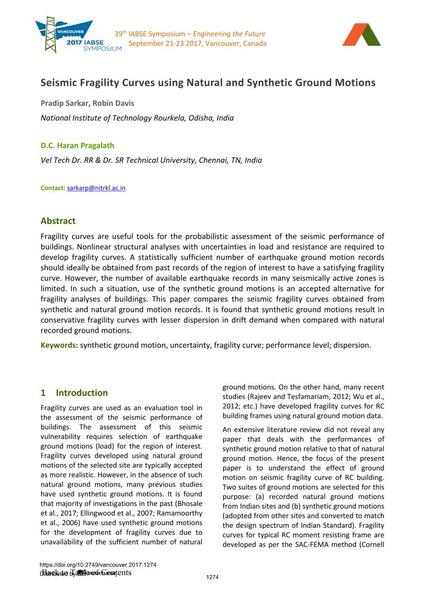Seismic Fragility Curves using Natural and Synthetic Ground Motions

|
|
|||||||||||
Bibliographic Details
| Author(s): |
Pradip Sarkar
(National Institute of Technology Rourkela, Odisha, India)
Robin Davis (National Institute of Technology Rourkela, Odisha, India) D. C. Haran Pragalath (Vel Tech Dr. RR & Dr. SR Technical University, Chennai, TN, India) |
||||
|---|---|---|---|---|---|
| Medium: | conference paper | ||||
| Language(s): | English | ||||
| Conference: | IABSE Symposium: Engineering the Future, Vancouver, Canada, 21-23 September 2017 | ||||
| Published in: | IABSE Symposium Vancouver 2017 | ||||
|
|||||
| Page(s): | 1274-1280 | ||||
| Total no. of pages: | 7 | ||||
| Year: | 2017 | ||||
| DOI: | 10.2749/vancouver.2017.1274 | ||||
| Abstract: |
Fragility curves are useful tools for the probabilistic assessment of the seismic performance of buildings. Nonlinear structural analyses with uncertainties in load and resistance are required to develop fragility curves. A statistically sufficient number of earthquake ground motion records should ideally be obtained from past records of the region of interest to have a satisfying fragility curve. However, the number of available earthquake records in many seismically active zones is limited. In such a situation, use of the synthetic ground motions is an accepted alternative for fragility analyses of buildings. This paper compares the seismic fragility curves obtained from synthetic and natural ground motion records. It is found that synthetic ground motions result in conservative fragility curves with lesser dispersion in drift demand when compared with natural recorded ground motions. |
||||
| Keywords: |
uncertainty performance level synthetic ground motion fragility curve dispersion
|
||||
